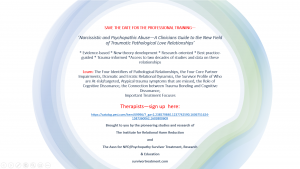So far this column has taken a look at the biochemical impact of PTSD and sustained stress. We’ve considered neurotransmitters and cortisol, two interrelated responses to the threat of (or actual) physical and or emotional harm.
As we’ve seen, when a person lives under constant stress, his or her biochemical’s almost always become unbalanced, leading to a host of emotional and physical symptoms. This stress response often takes on a life of its own and in doing so creates further problems such as cortisol and or serotonin depletion.
Neurologically, the same kind of thing happens in the nervous system-the brain’s frequencies get stuck in the “red alert mode.“
The nervous system, composed of bundles of brain cells, is an amazing communication system, more complex than just about any system known. Brain cells communicate with lightning speed using neurotransmitters and electrical signals. Particular grouping of signals or frequencies are more active under certain conditions such as sleep, relaxation, or being on red alert.
Neurofeedback training, based on the early success of fingertip based biofeedback, uses a number of aspects about the brain’s ability to self-correct,or retrain, under specific circumstances: The person/client doing the training has sensors placed on the head and ears, to pick up information from the scalp-brainwaves. A computer program is designed to both read and interpret these signals, and to determine to what degree things are out of balance.
Meanwhile, the computer’s music file is opened and a recorded piece of music or a CD is played. The music is stopped by the computer program when it detects a pattern that is essentially out of balance. This interruption is perceived by the brain as a signal to interrupt what is was doing-in the case of PTSD, being on red alert.
When the brain is given this information many times for many weeks, it gradually stops the pattern of overreacting to things that are not particularly threatening. For example, many partners of disordered persons have an overly sensitive startle reflex. A relatively harmless situation can trigger an extreme reaction, especially if the person is used to walking on eggshells with a disordered partner.
Neurofeedback training, a non-invasive, proven method,
- helps the client regain the ability to relax, which can
- reduce hypertension, promote healthy sleep patterns and
- reduce dependency on chemical (medications, drugs)and behavioral (overeating, overspending) self-soothing patterns, and
- can promote constructive problem solving as the brain is less controlled by anxiety and fear.
There are many, many benefits to neurofeedback training. Next month’s column will provide a more thorough description of the process and the results.
In the meantime, here are a couple of links to sites that will provide further information:
http://www.youtube.com/watch?v=JZ-wX7kLBr4
http://aboutneurofeedback.com/ptsd.htm
For more information about Joan-Marie, visit her website:






